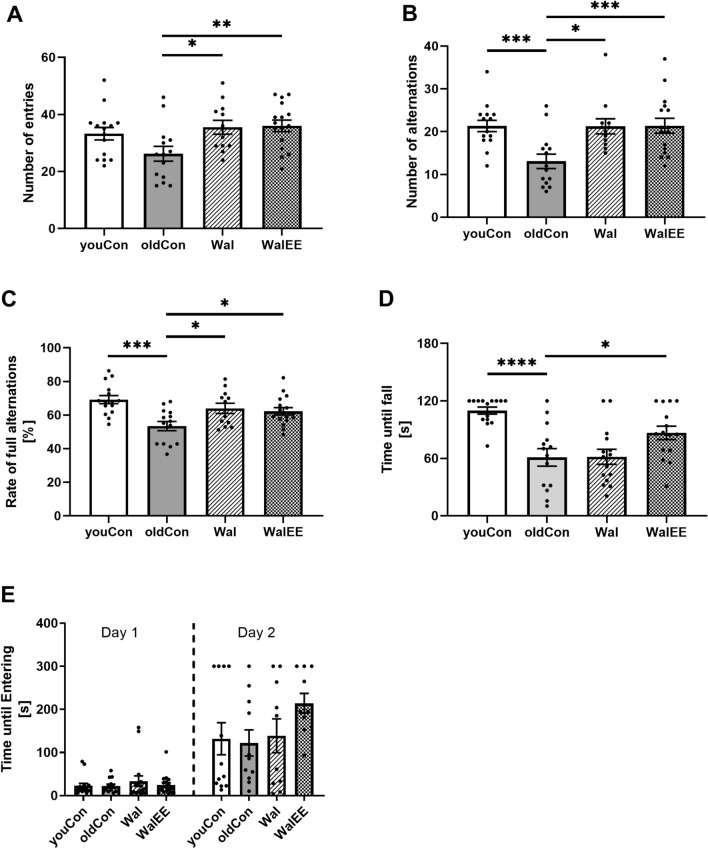Fig. 2.
Y-Maze alternation test. a Number of entries into the three different arms of the Y-Maze. Duration of Y-Maze experiment was 5 min. b Number of full alternations. One full alternation is defined as a mouse entering all arms of the maze before re-entering the already visited one. c Alternation rate of Y-Maze test, calculated as the number of full alternations divided by the number of entries. d Rotarod test. Time in [s] of mice being able to stay on the rotating rod. Speed of the rod gradually increased until 60 s into the experiment; experiment was stopped if mice were able to stay on the rod for 120 s. e Passive Avoidance test. Mice were put in an illuminated chamber and time was measured until they retreated into a dark chamber. On day one, a weak stimulus was applied upon entering the dark chamber. On the second day, time until mice entered the dark chamber was recorded to investigate mice’s memory. Displayed are mean ± SEM of n = 12–15 in a–d and n = 10–12 in e. Full range of data is displayed using dots for each individual mice. Statistical significance was tested via one-way ANOVA and post hoc Dunnett’s test comparing all groups with oldCon (*p < 0.5, **p < 0.01, ***p < 0.001, ****p < 0.0001). oldCon = aged Control; youCon = Young control; Wal = Walnut group; WalEE = Walnut + Enriched Environment group. Parameters for the statistical tests can be found in the supplementary Table S1

